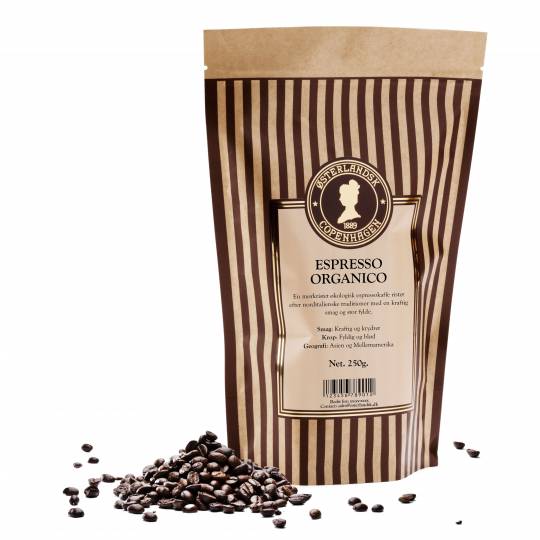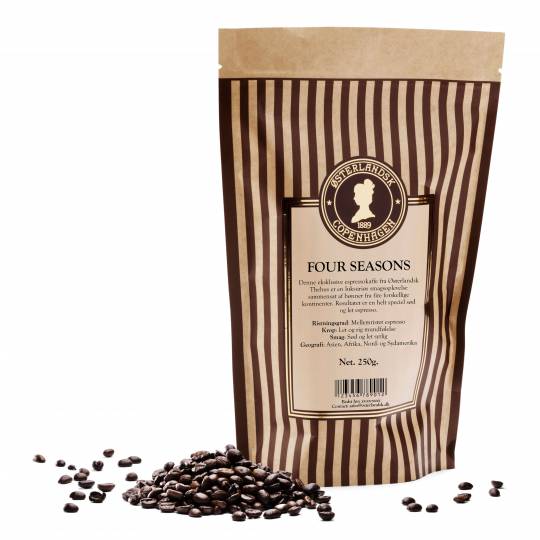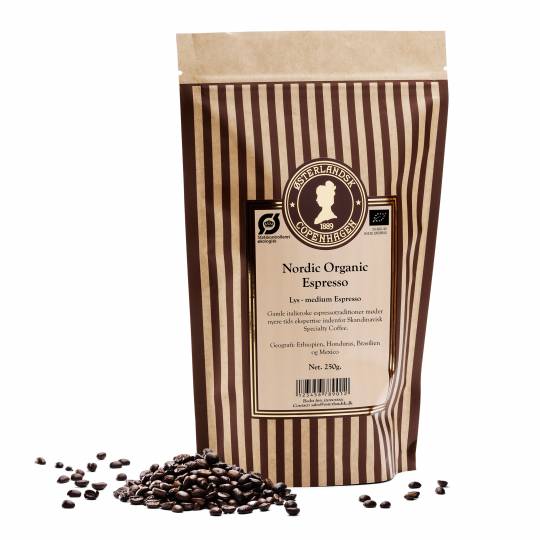More about: Espresso Coffee
Espresso is an Italian coffee brewing tradition that can be traced back to the early 1900s in Milan. Espresso is Italian for express and refers to the fact that the coffee must be drank quickly. In 1901 Luigi Bezzera patented a machine where vapor pressure pushed water through the ground coffee. In 1903, the patent was sold to Desidero Pavoni, who first put the idea into production and thus started a tradition that would later become a cornerstone of Italian bar culture. (La Pavoni espresso machines). The ground coffee is stamped and held between two filters and 90 degrees hot water is pressed through the coffee with 9 bars. It is important that the coffee is finely grinded and stamped so that a suitable back pressure is created, so that the throughput time is approx. 25 sec. and the amount of coffee in the cup will be approx. 25 ml. Traditional Italian espresso coffee is typically a blend of up to 7 different kinds of raw coffee. Robusta is approx. 10% in the vast majority of blends as this is cheaper and also gives cream. Many people think that Italian coffee is something particularly refined, but the truth is that, statistically speaking, Italy is among the countries that import the cheapest qualities in Europe. This is in part the result of great competition among Italian coffee holidays, but must also be seen in the light of the traditional Italian brewing method. It is the most volatile flavors that are the best. That is, it is the first drops drawn out of the coffee that are the best. Since a classic espresso is very short and is consumed with large amounts of sugar, the quality of Danish coffee is not as high. Most have only good coffee experiences from Italy, and this is due to the operation of the coffee machine, (cleaning, adjusting the grinder, preheating cups, etc.), than the real quality.










